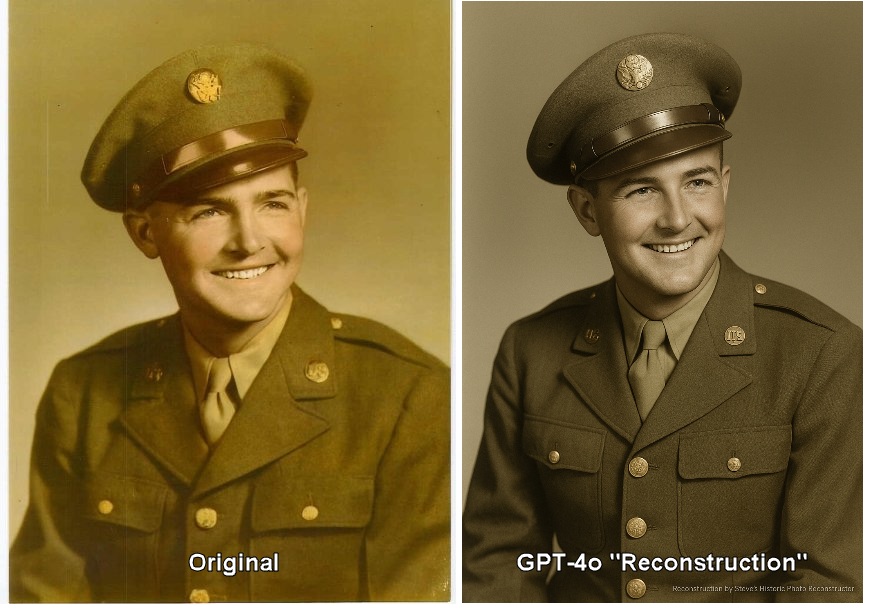This spring, many of us got our first hands-on experience with the new generation of photorealistic image generators, starting with OpenAI’s GPT-4o in March. The ability to “enhance” old family photos was compelling—and concerning.
Like others in the community, I experimented with these tools. In May, I shared a prompt in the Genealogy and Artificial Intelligence Facebook group, trying to see if we could use AI responsibly for photo work. But I quickly realized—as many genealogists did around the same time—that these tools don’t “restore” images in any meaningful sense. They generate plausible alternatives.
What These Tools Actually Do
My own experiment made this clear. I tested one of these tools on a photo of my grandfather, Warren Dean Lawrence. The results were troubling.

As I noted in my June blog post: “The man on the left is my grandfather; the man on the right is not.”
The AI didn’t repair or “restore” the original. It learned from the “seed” image and generated a new, convincing-but-fake person. This is the core problem: these new tools (technically “auto-regressive” image-generating models, an advance over the earlier “diffusion” models such as DALL-E) create plausible fabrications that can permanently corrupt our historical record.
Then came Google’s Gemini 2.5 Flash Image (aka “Nano Banana”) this summer, making this power instantly accessible to millions. Suddenly, family trees across the internet began filling with unlabeled AI-generated “restorations” being treated as historical photographs.
A Community Response
Fortunately, experienced genealogists saw this coming and took action.
The Coalition for Responsible AI in Genealogy—led by expert genealogists far more qualified than I am—has been working since its formation to address AI challenges in our field. They released foundational guiding principles in February, and today they’re releasing a crucial new statement: “Protecting Trust in Historical Images.”
I’ve been privileged to serve as a technical advisor to the Coalition, but the real work here was done by genealogists who deeply understand evidential standards and the Genealogical Proof Standard. This statement reflects their expertise.
The Coalition’s three core recommendations are simple and practical:
- Always Label modified images.
- Always Cite the original source.
- Use as Illustration, Not Evidence.
For detailed guidance on implementing these recommendations, see the educational articles linked at the bottom of the statement.
When we use AI tools—and many of us will—we're accountable for accuracy, transparency, and ethical practice.
Our Responsibility
These tools aren’t going away. As genealogists, our responsibility is clear: we must be the “humans in the loop.” When we use AI tools—and many of us will—we’re accountable for accuracy, transparency, and ethical practice.
The Coalition’s guidelines help us meet that responsibility. They protect the integrity of our shared historical record while allowing us to explore what these technologies might offer.
I encourage you to read the full statement and consider adopting these practices in your own work. Our collective commitment to evidential standards is what keeps genealogy trustworthy.
I’m grateful to the Coalition genealogists who led this effort and to our broader community for taking these challenges seriously.